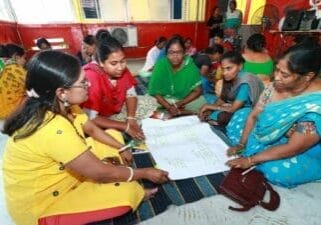News > Blog
Multipurpose Cooperative Entities Challenge Cooperative Sector in Uganda
Published 06/13/2016 by Global Communities

Multipurpose Cooperative Entities Challenge Cooperative Sector in Uganda
By Richard Mujuni, Program Officer, DESIGN team, Uganda
This article originally appeared on the Global Cooperative Learning Platform.
One of the major impediments to growing cooperative structures in Uganda is born from the multipurpose nature of our umbrella organizations. For example, in Mubende (just west of Kampala), there is the Mubende Growers Union, but this union contains diverse enterprises like coffee, beans, maize, and other produce grown in Mubende. A close assessment of this arrangement exposes the weaknesses and deficiencies of cooperative unions. In their current and complex settings, these unions find it difficult to adequately address individual value chain challenges and, hence, remain only unions in name and ineffective in addressing most cooperative challenges.
I recently had the opportunity to understand these challenges when I was working in Mubende on a program survey. In speaking with community members about unions, it made me think about our program, DESIGN, and its challenge of how to work with stakeholders to strategically affect the cooperative movement in Uganda and to help move from multipurpose to value chain specific unions. I believe this specialization will strengthen farming operations of these cooperatives from access to quality inputs to value addition and stronger marketing terms.
Earlier in the year, while on a learning trip in Kigali, note was made of the differences in the structures of cooperatives in Rwanda and Uganda in terms of how the cooperative movement is organized. In Rwanda, the cooperatives are structured /organized according to specific value chains from the grassroots where they have primary producer cooperatives, then on to district-based marketing unions and, lastly, national federations. The national federations forum was referred to as the national confederation of cooperatives.
In Uganda, the structure is quite different with the primary producer cooperative societies at the grassroots level and the marketing unions at the district level; they both may engage in more than one value chain. In specific value chains like coffee and milk, the primary societies and unions are specialized, but do not have the national federation level. In some cases in Uganda, instead of unions at the district level, there is another tier of marketing cooperatives known as the Area Cooperative Enterprise (ACE), which is based at sub-county levels and handles more than one value chain. At the national level, all of these cooperatives are free to federate to the Uganda Cooperative Alliance (UCA).
On the other hand, the Rwanda cooperative structure provides for better specialization and segregation of roles and responsibilities at each level, enabling cooperators and the government to concentrate on value chain specific challenges and solutions leading to increased access to quality seed, fertilizer, improving post harvesting and handling services, formal marketing practices manifested by contract signing, and partnership agreements across a wide range of cooperatives. The Ugandan case is still less specialized and organized, so the UCA remains a good apex cooperative umbrella, albeit with unclear members and roles. Looking at the areas visited so far, including the post-Lord’s Resistance Army (LRA) conflict Lira district, the revision of the cooperative structure in Uganda will accelerate the revival of cooperatives in the greater part of the country and will help diversify areas of cooperation, facilitate complimentary actions between government programs and the cooperative agenda, ease research and monitoring for cooperatives, and guide policy formulation and support.





